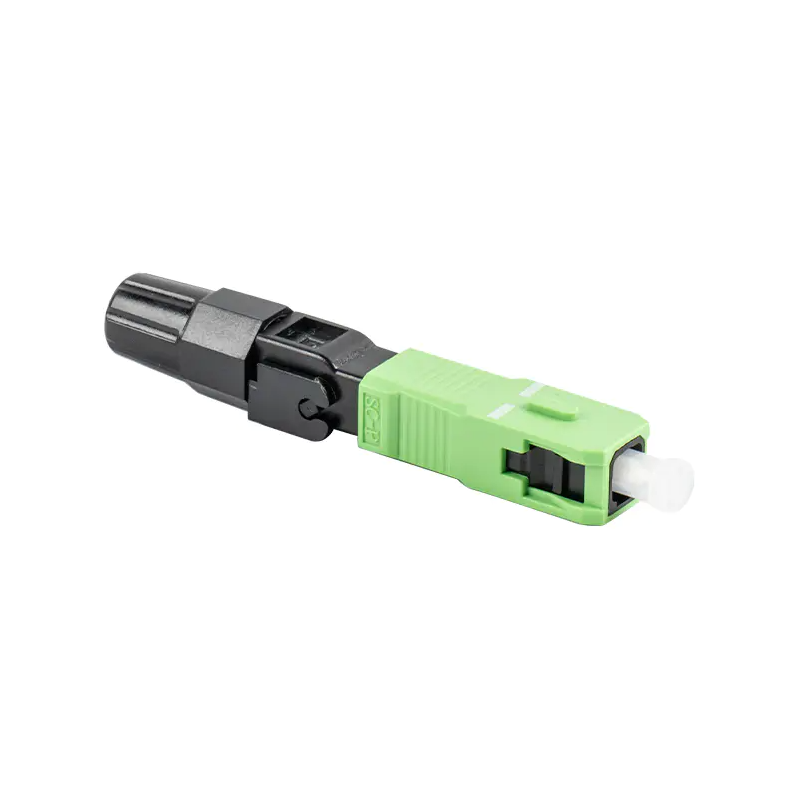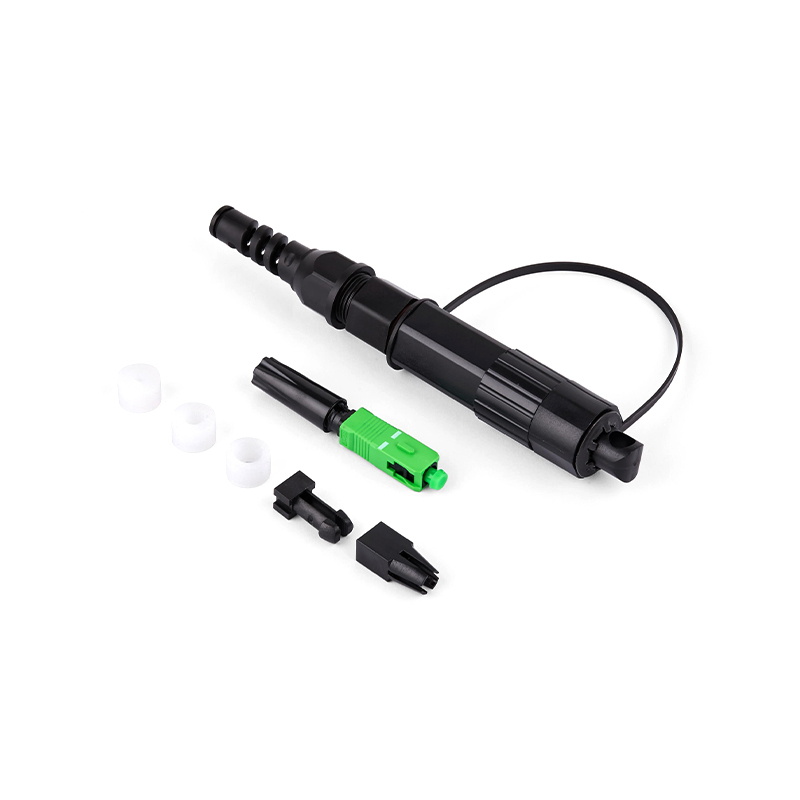What is a Fiber Optic Fast Connector?
2025-11-14
In today's rapidly developing information age, fiber optic communication has become a core technology for backbone and access networks. The rapid deployment and maintenance of fiber optic networks rely heavily on a key component—the fiber optic fast connector.
Content
What is a Fiber Optic Fast Connector?
A fiber optic fast connector, as the name suggests, is a device that enables rapid fiber end-face connection without the complex on-site splicing operations required by traditional fiber optic connectors. It is a pre-embedded or prefabricated connector that allows for extremely fast and simple fiber splicing in the field, significantly reducing construction time and dependence on specialized splicing equipment.
In projects such as Fiber to the Home (FTTH), fiber optic quick connectors play a crucial role. Their emergence solves the pain points of traditional splicing technologies, such as high environmental requirements, long operation times, and expensive equipment.
Technical Features and Advantages of Fiber Optic Fast Connectors
As an important component of fiber optic communication networks, fiber optic quick connectors possess the following core technical features and advantages:
Rapid Installation, High Efficiency and Convenience
This is its greatest advantage. On-site installation typically takes less than a minute, requiring no power supply or expensive fusion splicers. Construction workers can complete fiber optic connections with simple stripping, cleaning, cutting, and crimping, greatly improving project efficiency.
Reduced Costs
Compared to fusion splicing, using fiber optic quick connectors significantly reduces the purchase and maintenance costs of fusion splicing equipment (such as fusion splicers) and the time costs of on-site construction personnel.
High Reliability and Stability
Excellent fiber optic quick connectors utilize precision ceramic ferrules and pre-installed fiber designs, ensuring low insertion loss and high return loss at the connection point, with performance comparable to some fusion splices.
Reusability
Some high-quality fiber optic quick connectors are reusable, allowing for easy on-site testing and maintenance.
Application Scenarios: Who uses fiber optic quick connectors?
Due to their convenience, fiber optic quick connectors are widely used in various scenarios requiring rapid deployment of fiber optic connections, including:
- Fiber to the Home (FTTH) Access Networks: They are the preferred choice for end-point connections in home user unit (ONU) connections and building fiber optic cabling.
- Communication Rooms and Data Centers: Used for temporary or permanent equipment connections and patch cord fabrication.
- Emergency Communication and Repair: Fiber optic quick connectors enable rapid restoration of communication in the event of an unexpected fiber optic cable outage.
- Security Monitoring and Industrial Control: In these fields, fiber optic deployment often requires speed and reliability.
Key Considerations for Selecting Fiber Optic Quick Connectors
Several key parameters need to be considered when choosing a suitable fiber optic quick connector:
- Connector Type: Common types include SC, FC, and LC. SC type is the most widely used in FTTH due to its ease of use.
- Insertion Loss and Return Loss: These are core indicators of connector performance. Choose products with low insertion loss (e.g., 0.3 dB) and high return loss (e.g., 50 dB).
- Pre-embedded Fiber Compatibility: Ensure that the pre-embedded fiber inside the connector is compatible with the type of fiber you are splicing (e.g., G.652D, G.657A).
Fiber optic quick connectors, with their unique convenience and reliability, are profoundly changing the construction and maintenance of fiber optic networks and are an important technological force driving the popularization of fiber optic communication.











